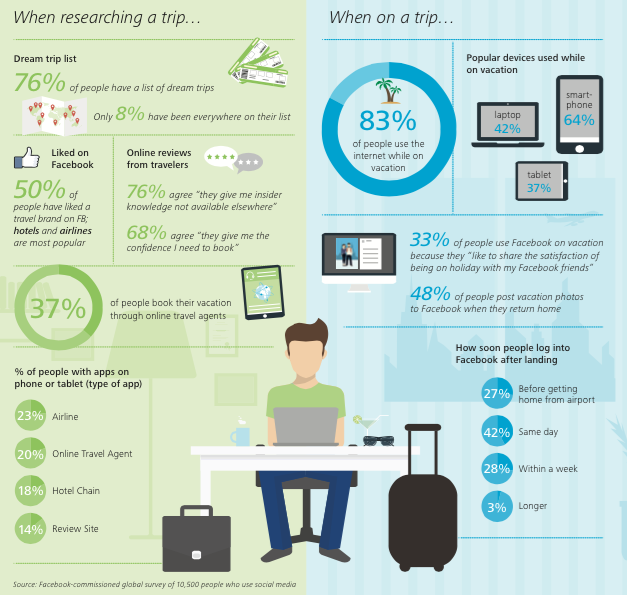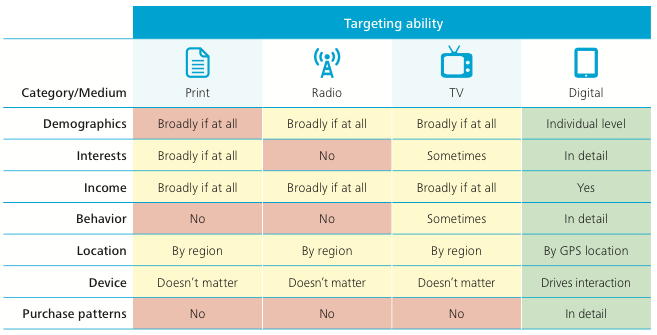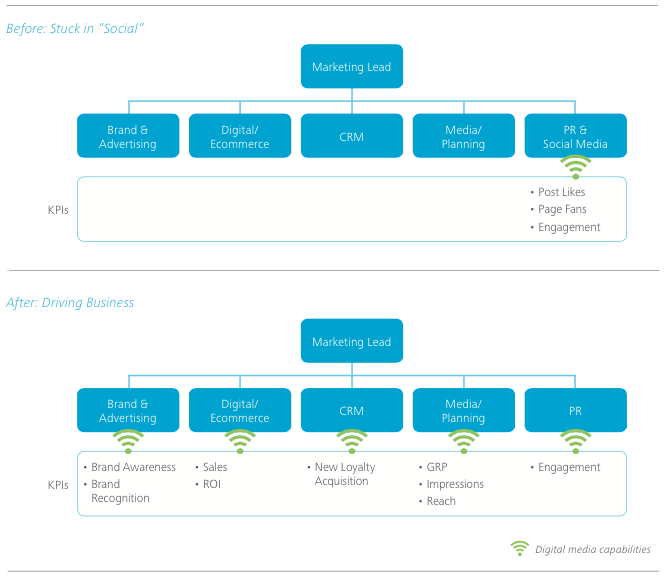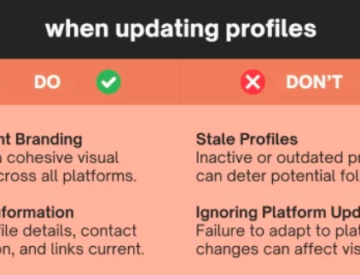Together with Facebook, consulting firm Deloitte recently conducted a poll with 10,400 travelers who are also avid social media users, seeking to identify key ways in which brands can improve their travel marketing performance on social media. Or rather, how focus needs to evolve from social media to a broader, more holistic digital marketing approach.
Readers of this blog will recognize many of these findings on how users engage with social and travel, prior to and during the experience. Some highlights include:
- 37% of people book their vacation through online travel agents, such as Expedia, Booking, Orbitz, etc.
- 1 out of every 3 travelers use Facebook while on vacation, most often with the urge to share the satisfaction of being on holidays with their network of friends and colleagues.
- 83% of people use internet while on vacation!

When social means business
The first part of the Deloitte report showcases interesting stats about the importance of social media and review sites prior to, during and after the vacation decision-making process. It also makes a strong case for how travel consumers now use digital channels, making social media – Facebook in particular – the key player for attention and time spent online.
Where this report is perhaps most pertinent is when it states three recommendations that echo priorities I have shared here with you in the past.
1. Business metrics, not social ones
Social media efforts and metrics often revolve around fans, likes or shares, which only paint a small picture of the digital landscape. In the travel vertical, we usually seek to drive awareness, consideration, trial and retention from potential customers, while rewarding ongoing clientele with loyalty programs and initiatives. So how does digital support these efforts?

Thus, social efforts should contribute to generating traffic, leading to higher conversion rates, for example. Or increase customer service ratings, by responding quicker or on the platform of choice for travelers, i.e. Twitter, Linkedin, etc.
In the graphic shown above, we see business metrics travel brand tend to track and report. Social must be integrated within digital campaigns to ensure these metrics move in the right direction, rather than merely focusing on engagement rates or increases in Likes.
2. Quality, rather than quantity
Another key recommendation relates to the importance of zooming in on the right audience. Better to fish in a small pond than trying to boil an ocean, as they say!

Digital campaigns have no equal when it comes to the ability to target specific demographics, interests, income, behavior or location. And with the advent of social media, Facebook in particular where we share incredible amounts of information about our daily lives, brands can now target across specific devices and according to purchase patterns, bringing us closer to that ever-elusive concept of reaching “the right person, at the right place, at the right time”. In 2015, we can even add “on the right device”!
The best example of this potential is perhaps given through custom audiences or even look-alike audiences, allowing to identify specific targets who might have visited a given page on your website, and to whom we can advertize through remarketing on Facebook.
3. How social is your organization?
Last but not least, this evolution begs a question that has not been laid to rest in still too many organizations: who’s in charge of digital?

Is social media a PR function or customer service? Should brand managers overlook this responsibility or perhaps it should stay under digital & ecommerce managers? Of course, answers will vary in each organizations, mostly depending on the social and digital maturity of brands.
But truth be told, social should ideally be dealt with across marketing functions, with other departments in on the play as well through cross-department teams including human resources, legal, IT and others, if and when applicable.
I wholeheartedly agree with the report stating that “what stands in the way is policy, not technology”. Travel brands that integrate the reality of social and digital campaigns within their structures and processes are those that strive in this evolving ecosystem, obtaining better customer engagement and overall communications.









Leave a Reply